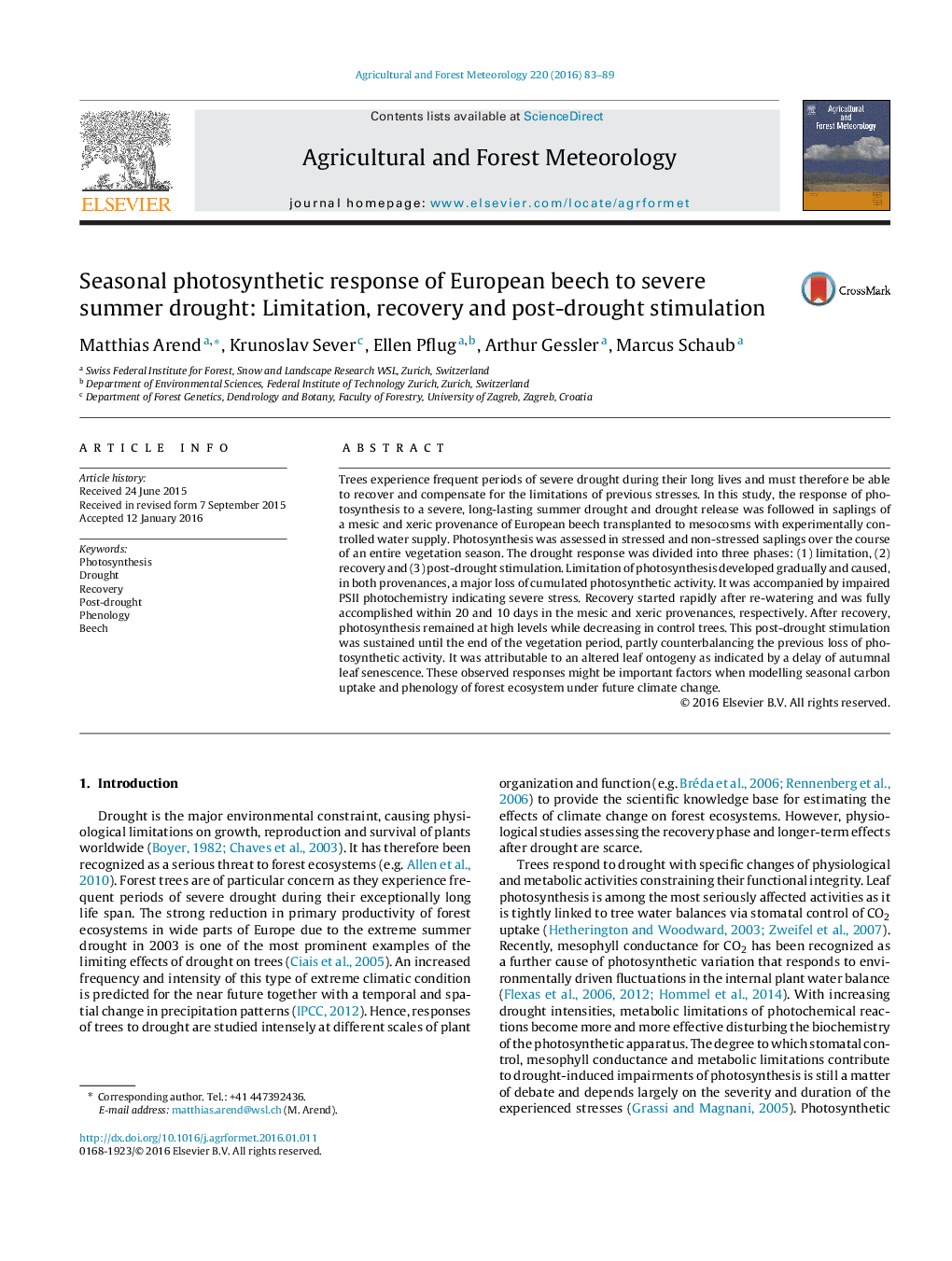| Article ID | Journal | Published Year | Pages | File Type |
|---|---|---|---|---|
| 6536995 | Agricultural and Forest Meteorology | 2016 | 7 Pages |
Abstract
Trees experience frequent periods of severe drought during their long lives and must therefore be able to recover and compensate for the limitations of previous stresses. In this study, the response of photosynthesis to a severe, long-lasting summer drought and drought release was followed in saplings of a mesic and xeric provenance of European beech transplanted to mesocosms with experimentally controlled water supply. Photosynthesis was assessed in stressed and non-stressed saplings over the course of an entire vegetation season. The drought response was divided into three phases: (1) limitation, (2) recovery and (3) post-drought stimulation. Limitation of photosynthesis developed gradually and caused, in both provenances, a major loss of cumulated photosynthetic activity. It was accompanied by impaired PSII photochemistry indicating severe stress. Recovery started rapidly after re-watering and was fully accomplished within 20 and 10 days in the mesic and xeric provenances, respectively. After recovery, photosynthesis remained at high levels while decreasing in control trees. This post-drought stimulation was sustained until the end of the vegetation period, partly counterbalancing the previous loss of photosynthetic activity. It was attributable to an altered leaf ontogeny as indicated by a delay of autumnal leaf senescence. These observed responses might be important factors when modelling seasonal carbon uptake and phenology of forest ecosystem under future climate change.
Related Topics
Physical Sciences and Engineering
Earth and Planetary Sciences
Atmospheric Science
Authors
Matthias Arend, Krunoslav Sever, Ellen Pflug, Arthur Gessler, Marcus Schaub,
